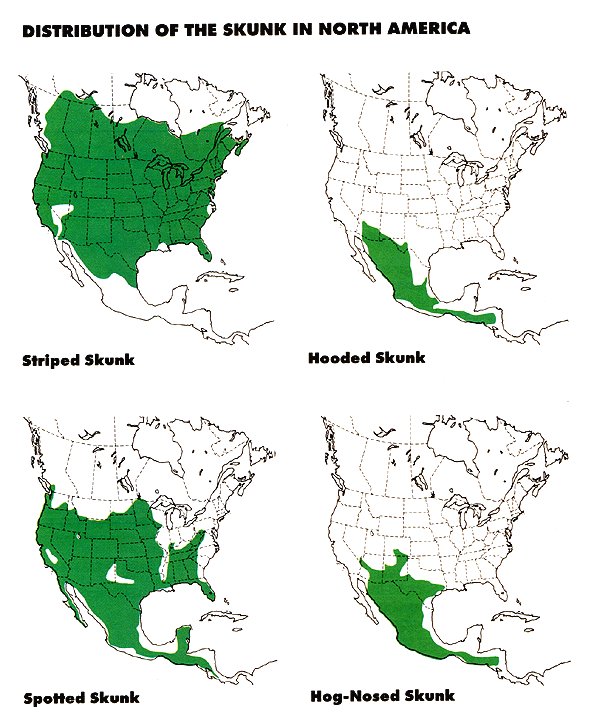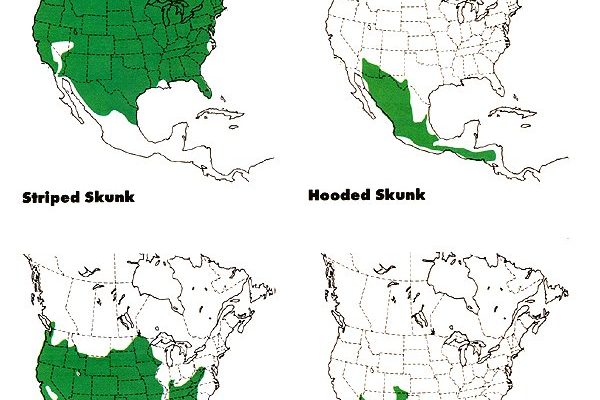
Imagine skunks as the quirky neighbors of the animal world. They’re not exactly your typical pets, but they have their charm. Understanding where skunks live can give us insights not just into their lives but also into the ecosystem around us. So, let’s dive into the world of skunks and explore their habitat and distribution.
What Is a Skunk?
Before we get into where skunks live, let’s briefly discuss what they are. Skunks belong to the family Mephitidae, which includes about 12 different species. The most common types include the striped skunk, spotted skunk, and hooded skunk. All of them share that iconic black and white coloration, which serves as a warning to potential predators.
Skunks are small to medium-sized mammals, typically weighing between 4 to 10 pounds. They have adapted well to a variety of environments, demonstrating their resilience and ability to thrive in different settings. So now that we have a grasp on what a skunk is, let’s explore where they like to call home.
Geographic Distribution of Skunks
You might be wondering, “Where can I find these critters?” Skunks are primarily found throughout North America, although their range stretches into parts of South America as well. They tend to inhabit areas from southern Canada down to northern Mexico.
Skunks are quite adaptable, which means they can survive in a variety of places. From dense forests to open fields, and even urban environments, these animals are resourceful. Honestly, you could be sitting on your porch in suburbia and see a skunk waddling by, completely unbothered by the hustle and bustle of human life.
Natural Habitats of Skunks
Skunks are versatile creatures and can thrive in several natural habitats:
- Forests: They love wooded areas where they can find plenty of cover and food. Forests provide them with shelter from harsh weather and predators.
- Grasslands: Open fields allow skunks to forage for insects and small animals. Here, they can also find plenty of burrows to take refuge in.
- Urban Areas: Surprisingly, skunks have adapted to living alongside humans. They often rummage through gardens and garbage cans, finding a buffet of leftovers.
- Wetlands: Skunks are excellent swimmers and can even be found in marshy areas where they hunt for frogs and other amphibians.
Each of these habitats provides essential resources for skunks, like food, shelter, and mates. Now, let’s unpack how these environments impact their lifestyle.
How Their Habitat Affects Their Behavior
The habitat that skunks choose directly impacts their behaviors, particularly when it comes to food and shelter. In forested areas, for example, skunks tend to be more solitary. They roam around looking for insects, fruits, and small animals. In contrast, in urban settings, they often adapt to a more social lifestyle, as they can find food easily and sometimes even take advantage of human-made structures.
You might also notice that skunks are more active at night. This nocturnal behavior helps them avoid predators while hunting for food. Their ability to adapt their behavior to their surroundings is part of what makes skunks such fascinating creatures.
Seasonal Movements of Skunks
Like many animals, skunks exhibit seasonal behaviors that reflect their habitat. During the winter, skunks often enter a state of dormancy. Don’t think of it as true hibernation—they don’t sleep through the winter like bears do. Instead, they might spend more time in their burrows or dens, coming out occasionally to search for food.
In spring and summer, skunks are much more active. They emerge from their dens and start to mate, which you might find interesting. Female skunks typically give birth to litters of about 3 to 10 kits, depending on the species and the availability of food.
Skunks in Urban Environments
Let’s talk about urban skunks for a moment. You might be surprised to find out how well these creatures adapt to city living. In many cities across North America, skunks have become a common sight, scurrying through parks or rummaging through trash cans.
Their presence in urban areas highlights the importance of green spaces within cities. Parks, gardens, and even yards can provide critical resources for these little mammals. However, urban living does come with its challenges, such as traffic, predators like dogs, and human interference.
Conservation and Skunk Habitats
Understanding where skunks live isn’t just about learning fun facts; it also ties into conservation. Skunks play an essential role in their ecosystems by controlling insect populations and serving as prey for larger animals. However, habitat destruction due to urban development and agriculture can threaten their populations.
Conservation efforts aim to protect natural habitats, ensuring that skunks can thrive. By preserving green spaces and promoting biodiversity, we can help maintain the balance of our ecosystems. This isn’t just beneficial for skunks; it also enriches our lives as we get to enjoy the beauty of nature around us.
The Importance of Understanding Skunk Habitats
So, why does all this matter? Understanding where skunks live and their habitats helps us appreciate their role in our environment. Skunks are often misunderstood and seen as pests, but they’re really just trying to survive in a world that is rapidly changing around them.
By learning about skunks and their habitats, we can foster a sense of compassion. After all, they’re just looking for food and shelter, much like us. And who knows? Next time you see a skunk, you might just find it in your heart to let it pass without a second thought.
In conclusion, skunks are more than just smelly animals; they’re an integral part of our ecosystem. From their adaptability to urban environments to their seasonal behaviors and importance in conservation, there’s a lot to appreciate about these creatures. Understanding where skunks live helps us connect with nature and reminds us of the diversity of life that exists all around us. So, keep an eye out—who knows what amazing wildlife might be living right in your own backyard?

